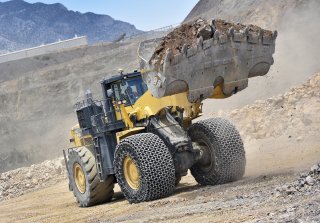J. Peter Pham

Climate activists and other advocates for lowering carbon emissions sometimes make it seem as if the only thing standing between humanity and a bright green future is a lack of political will. So when President Joseph Biden hailed the Inflation Reduction Act (IRA) in his State of the Union address as “the most significant investment ever to tackle the climate crisis…leading the world to a clean energy future,” many were delighted. Not to be outdone, a week later the European Parliament approved a law that effectively bans the sale of new gas and diesel automobiles within the European Union (EU) from 2035, the deadline it set for carmakers to achieve a 100 percent reduction in CO2 emissions from new vehicles sold.
Alas, what holds back these green dreams is not want of moral imagination, but material shortages of critical minerals—without which there is no transition to clean energy systems.
First, overlooked in most political—to say nothing of politicized—discussions of the energy transition are the wildly different material requirements of renewable energy systems vis-à-vis their conventional fossil fuel-powered predecessors. For example, an electric vehicle (EV) like the Tesla Model Y, the top-selling car in the category in America last year according to the Kelley Blue Book, needs six times the amount of minerals that would go into a conventional automobile. It’s wiring alone requires about 130 pounds of copper—roughly three times the amount of the metal that goes into a gas-powered car. An efficient electrical conductor, copper is also needed for the switch to solar- and wind-powered generation for homes and businesses, which will necessitate massive rewiring. If, as expected, demand doubles to about 50 million metric tons a year by 2035, there will be an annual shortfall of nearly 10 million metric tons under the most optimistic scenario. And that is just copper: according to the International Energy Agency, achieving the goal of net-zero emissions by mid-century enshrined in the EU Climate Law as well as in President Biden’s December 2021 executive order will cause the cumulative demand for the most common minerals used in EVs and battery storage—lithium, graphite, cobalt, and nickel—to grow thirty-fold over the next two decades.
Second, compounding the shortage of material inputs is the concentration of sourcing and processing of the available critical minerals. For example, by itself, the Democratic Republic of the Congo (DRC), accounts for about 70 percent of global cobalt production. Moreover, almost all of the metal is then exported to China, which refines about 90 percent of the global supply of rare earth elements (REEs), two-thirds of the lithium and cobalt, and almost 40 percent of the nickel. As Biden’s Special Presidential Coordinator for Global Infrastructure and Energy Security, Amos Hochstein, recently acknowledged at the African Mining Indaba in Cape Town, South Africa, “This is a major concern for the U.S. and I think for the rest of the world. As we are going into a cleaner, greener, and entirely new energy system, we have to make sure we have a diversified supply chain. … We can’t have a supply chain that is concentrated in any country, doesn’t matter which country that is.”
Overcoming these two challenges will require an “all-of-the-above” mindset.
Boosting domestic production, which the IRA tries to incentivize, despite this being at odds with the Biden administration’s restrictive approach to permitting in some areas, is one step. Geology, however, can limit how much of a dent this makes: as I previously pointed out elsewhere, the United States possesses less than 1 percent of the world’s reserves of cobalt and, even if it could possibly to mine it all, would still run through its entire supply in about six years given the current rate of consumption.
Cultivating new partnerships is another approach to be pursued. The memorandum of understanding signed at the U.S.-Africa Leaders Summit in December, committing the United States to working with the DRC and Zambia to strengthen the EV value chain, has good potential. So does the Mineral Security Partnership, which includes Australia, Canada, Finland, France, Germany, Japan, South Korea, Sweden, the United Kingdom, the United States, and the European Commission. With some focused effort, the new pact could evolve from a discussion forum into a “buyers’ club” for minerals needed for batteries that might both reduce dependence on China and contribute to industrialization in countries producing the critical minerals, especially in Africa. The establishment of such a group would also have the benefit of helping America and some of its closest allies get past the spat over the subsidies offered in the IRA.
Finally, it needs to be recognized that, as Hochstein’s comments correctly implied, the single most significant threat is that any one country or entity so dominates supply chains that it is able, at will, to block rivals’ access to critical minerals and thus the pathway to transitioning to new energy systems. That is certainly what the Biden administration’s supply chain review found with respect to lithium-ion batteries, concluding that by “operating well outside globally accepted practices,” China has been able to “develop battery critical materials infrastructure well-ahead of market drivers,” resulting in the country producing 79 percent of all batteries in the world, with just one Chinese firm (CATL) by itself controlling 30 percent of the global EV battery market. To this end, diversification of supply is the overriding priority and the key to de-risking, even if it might entail having to do business at times with countries or firms that might otherwise not be viewed as “clubbable.”
The dream of a greener economy, powered by lower carbon or even carbon-neutral energy systems, may not be as fanciful as once thought, but achieving it will depend on securing access to and a steady (and copious) supply of the necessary strategic materials.
No comments:
Post a Comment